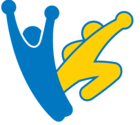Your child will learn to determine all of the possible outcomes and calculate the theoretical probability of an outcome or event, and how to test predictions through probability experiments. Your child will compare and explain the differences between theoretical probability and the experimental results of an outcome or event as well as use this information to make generalizations about probability.
Personal Mobile Device Use
Please read our WHF Personal Mobile Device (PMD) Plan. As well, please search Helping Students Use Cell Phones Safely for some added tips.

